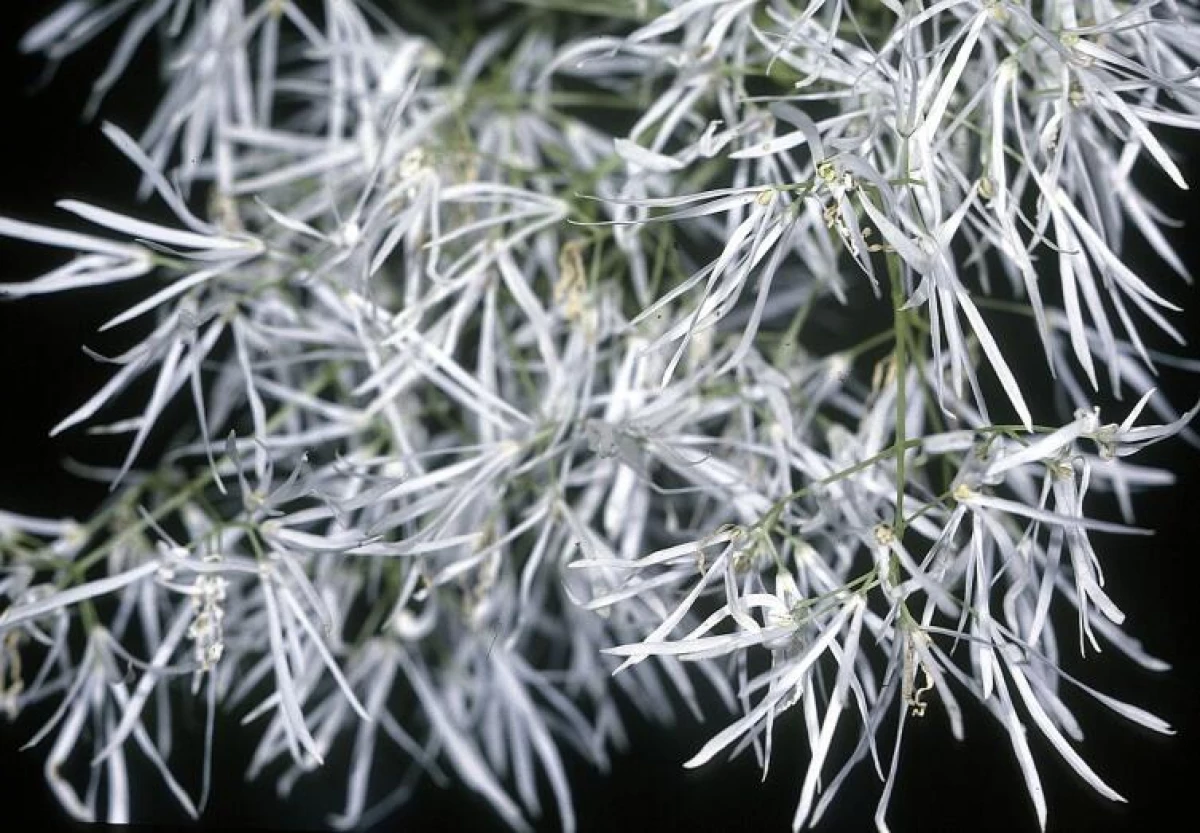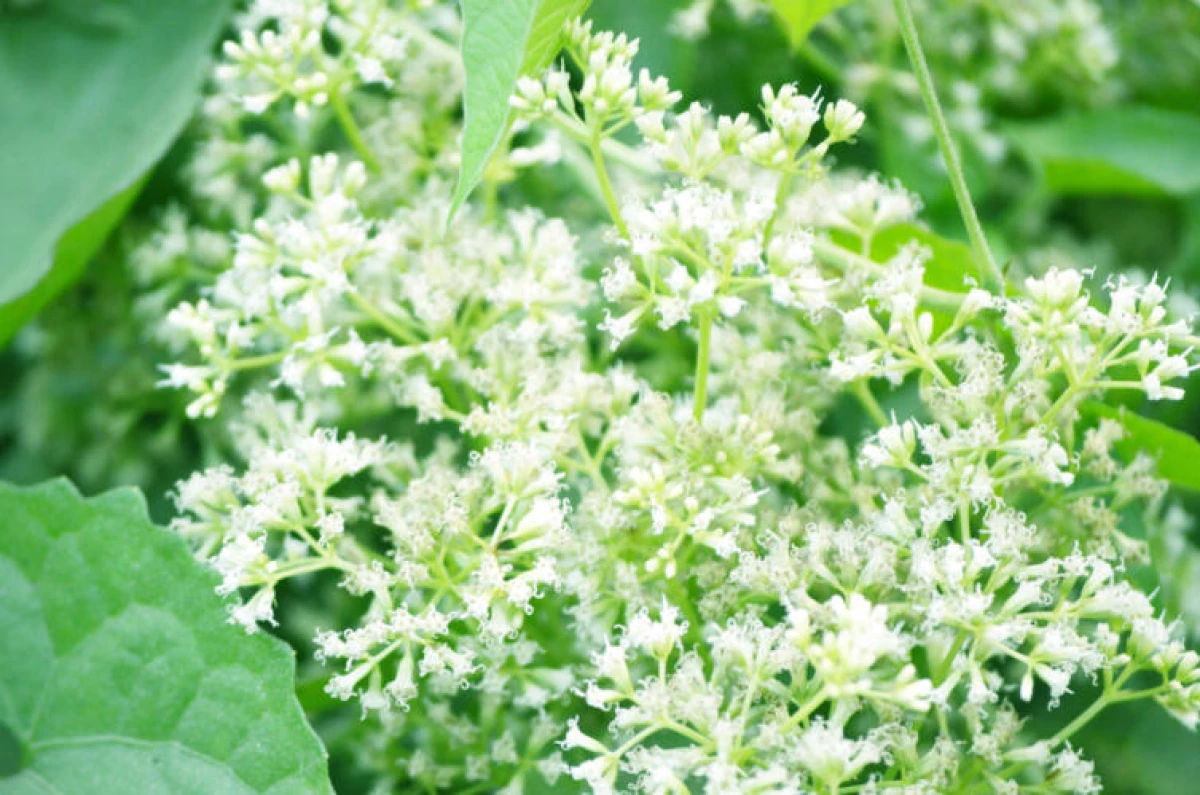
In conditions of explicit climate change, for example, in our southern region, we will soon forget what snow is. That this does not happen, you can grow exothes - a snowy tree, which in early summer will remind us of white, cold flakes that flew from the country of the Snow Queen.
True, the snow will cover the tree for a short time - 2-3 weeks, but this term is more than what we are watching today in the steppe zone of the Dnipropetrovsk region.
Winter view of a flowering plant gives spectacular snow-white flowers that bloom in abundance on the branches. Flowers collected in openwork inflorescences consist of narrow long, up to three centimeters, petals. In the wind, they pegs and then become similar to silvery-gray silky hair. In quiet weather, it seems that the twigs are completely covered with anter.
Hard elongated leaves, from 8 to 20 cm long, very decorative, in the fall they acquire a bright yellow color.

The Latin name of the tree, Hionantus, originated from the Greek words "CHION" (snow) and "Anthos" (flower). Russian-speaking gardeners call it a snowy or snowy. The British and the French are mastering the snow tree, the Americans are a fringe tree.
The snow tree comes from the genus Maslian and is a closest birthday of lilac, jasmine, turquish, butter, ash.
Rod includes more than a hundred species. Among them are only two suitable for growing in the middle lane - Hionantus Virgin and Hionantus dull. The first grows in North America in the states of Florida, Texas, Virginia, the second appearance - in East Asia.
Gardeners prefer to grow american snow tree - it is spectacular than Chinese and surpasses it in the winter hardiness.

The sophisticated decomposable inflorescences of Hionantus Virginsky as if snowflakes are thickly covered with snowflakes, in the hot jun watches, it freshes cool. Blossom continues for 2-3 weeks.
For the first time, this species got into Europe in the middle of the XVIII century. He became the decoration of the Royal Botanical Gardens Kew, the United Kingdom. In the South Gardens of Russia, a snowy tree was brought in the XIX century. Here it was safely settled, does not frost and annually blooms. The species is characterized by high frost resistance - withstands frost to 34 degrees.
Hionantus Virginsky is a tall shrub or a small tree. In nature reaches a 10-meter height, in our gardens it grows up to three meters.
The inflorescences of this species are large, up to 20-30 cm, the flowers exude a pleasant fragrance. In the first half of autumn, black and blue fruits ripen.
- It should be borne in mind that snowstorm is a bombing plant, therefore, two instances should be planted for fruits.
Snow-sided with Virgin's dull smaller, but its flowers are more fragrant.
The snow tree prefers to grow on well-lit places protected from strong winds in a nutrient and moistened soil. In the middle lane it must be stolen for the winter.
Hyonantus seeds and vaccinated, but it's quite complicated for lovers, so it's better to buy a ready sapling in the nursery.

The snow tree does not tolerate drought. In summer, it will take regular and abundant irrigation, after which the soil should be loosened.
Three times over the growing season, an exotic plant should be picked up. The first feeding is carried out early in spring mineral fertilizers with nitrogen, phosphorus and potassium. The second feeding - during the formation of buds and the third - at the end of the summer with potash-phosphoric fertilizers. The last feeding will increase the resistance of the tree to the frost.
The snow tree will look great as a soliton, it will also be suitable for a decorative group of various shrubs. If there is a reservoir on the plot, its shores will be excellent residence for this moisture-loving tree.
Author - Lyudmila Belan-Chernogor
Source - Springzhizni.ru.
